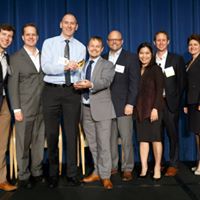
In modernizing its verification program, USCIS is changing the tire while driving
Eric Jeanmaire, the branch chief for the Verification IT Portfolio Modernization at USCIS in the Homeland Security Department, said moving to an agile approach ...
The U.S. Citizenship and Immigration Service’s effort to modernize a key system fits wholeheartedly into the old adage—changing the tires on a moving car.
USCIS is using all the federal IT buzz words of cloud, agile and data sciences to transform its verification system while tens of thousands of companies and citizens use it every day.
Eric Jeanmaire, the branch chief for the Verification IT Portfolio Modernization at USCIS in the Homeland Security Department, said they are modernizing multiple pieces of the verification program through an agile or dev/ops approach while still supporting the current legacy system and processes.
“The underpinning culture change that we see at USCIS really has been the framework that makes this project possible. That really started about four years ago when we started to make dramatic shifts in how we address technological problems at USCIS. The number one problem was our deployments were so far and few and there was so much red tape to get things out to production, there was a fear to get things into production. As we’ve changed that culture to one that is more about enablement to get into production.”

Jeanmaire said because the development sprints are short and so much of the process is automated, the project teams know almost immediately if there is a problem and can fix it quickly.
“A year ago we kicked off the first trunk of the modernization work. It proved that this approach is working very well. At this point, we’ve kicked off all the modular pieces we are doing under the modernization work,” he said. “If we go back and compare to five years ago, we were basically working in a system where the requirements come up front, well in advance and we keep rewriting requirements. We never make it past the conceptual phase. We have binders and binders worth of requirements that we planned to develop and actually nothing makes it into production.”
USCIS started the verification program in the 1990s with a goal of validating benefits for citizens such as employment or health insurance from the government.
Nearly 20 years later, the technology behind the program needs updating as it can’t handle future increases in users.
ACT-IAC recently recognized USCIS and its partner Excella Consulting for their work to modernize and improve the verification services by giving them the Igniting Innovation’s overall award.
Craig Schneider, a managing consultant for Excella Consulting, a contractor working on the program, said his team is working with USCIS to build the new applications in the cloud.
“There are certainly constraints and dependencies on legacy components. You certainly can’t just shut them off,” Schneider said. “Really what we have tried to do is avoid the big lift and shift and instead break off pieces at a time and make those changes to both systems live. There is a database that is used and is depended upon by various agencies we have to incrementally break stuff out and not adversely impact legacy systems until we have the ability to turn them off.”
Schneider said one of the biggest challenges is ensuring the correct cybersecurity — specifically encryption — standards are applied to protect USCIS data. He said a lot of the data that runs through the system is personal identifiable information (PII) so building the security in from the beginning and continually testing it is a key piece to this effort.
Jeanmaire said one metric USCIS is using to ensure the new site is meeting users’ needs is how many people give up before completing the verification process.
“Previously we had around 60 percent of the people who gave up on the process to sign up. Now we are down to 30 percent or lower,” he said. “We really are making a difference in making the site usable and tracking that with hard numbers.”
Jeanmaire added another goal is to lower the cost of the system. He said by moving the applications to the Amazon cloud and relying on automation to patch or update systems is letting them reinvest into future modernization efforts.
“This year we dropped at least $10 million in contracts that were no longer relevant and for operational costs and hosting costs from other environments used to be really expensive with data center maintenance. We are consolidating all of that into one cloud contract,” he said.
Copyright © 2024 Federal News Network. All rights reserved. This website is not intended for users located within the European Economic Area.
Jason Miller is executive editor of Federal News Network and directs news coverage on the people, policy and programs of the federal government.
Follow @jmillerWFED





